25 Rare, Vintage Winter Photos from Throughout the 20th Century (original) (raw)
 Underwood Archives/UIG/Shutterstock
Underwood Archives/UIG/Shutterstock
Vintage winter photos you’ve never seen before
Winter may be cold and long, but it’s also a season brimming with magic! Beyond the frosty air, it’s a time for Christmas cheer, festive traditions and cozy moments. Think delicious holiday treats, thoughtful gifts and winter quotes that warm the soul. But have you ever wondered what winter looked like decades ago? You’re in for a surprise with these incredible vintage winter photos!
We’ve uncovered 25 rare images that reveal just how wild winter used to be—some were even sent by our readers! Picture snow-covered houses buried beneath drifts, towering snowmen and icy buildings—and the surprising outfits people braved the cold in, like bonnets and light jackets!
Get ready to dive into some of the most jaw-dropping vintage winter photos from the past. You won’t believe your eyes!
Get Reader’s Digest ’s Read Up newsletter for more holiday tips, fun facts, humor, cleaning, travel and tech all week long.
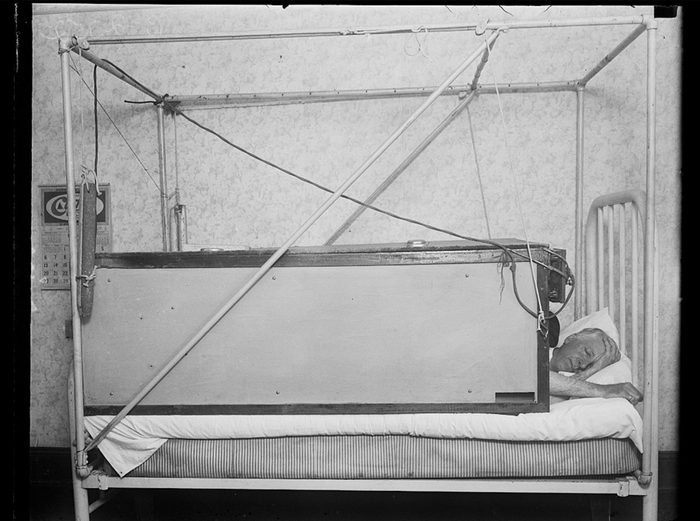
Library of Congress
Frigid beds
This vintage winter photo shows a 1927 electric “blanketless bed” created by Milton Fairchild of Washington, D.C., a contraption that kept a person warm without the inconvenience of covers. It never caught on, probably because its target market—people who enjoy sleeping in a box—consisted of only the inventor himself.
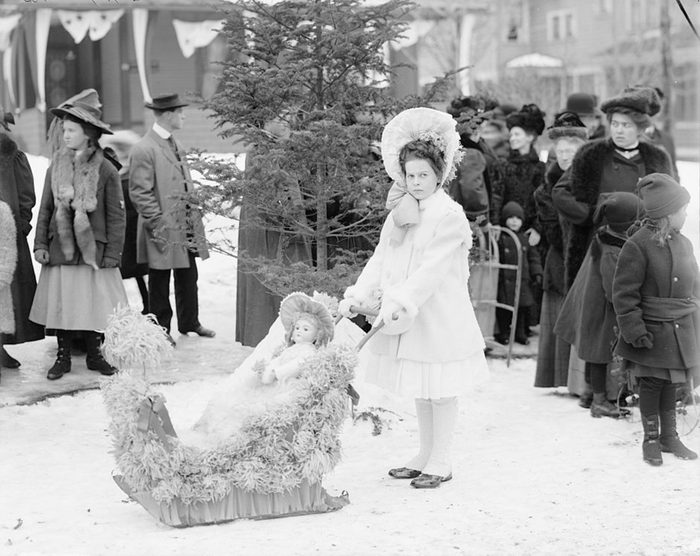
Library of Congress
Inadequate cold-weather gear
This vintage winter photo is worthy of being turned into a Christmas meme! These days, we gripe about being smothered, padded and puffed up with all our layers of down and wool. Still, at least we can say we’re warm. Because unless her bonnet was lined with Gore-Tex, this girl (the first-place winner at a 1909 midwinter carnival in Upper Saranac, N.Y.) was more suitably attired for a spring picnic than for a snowy stroll.
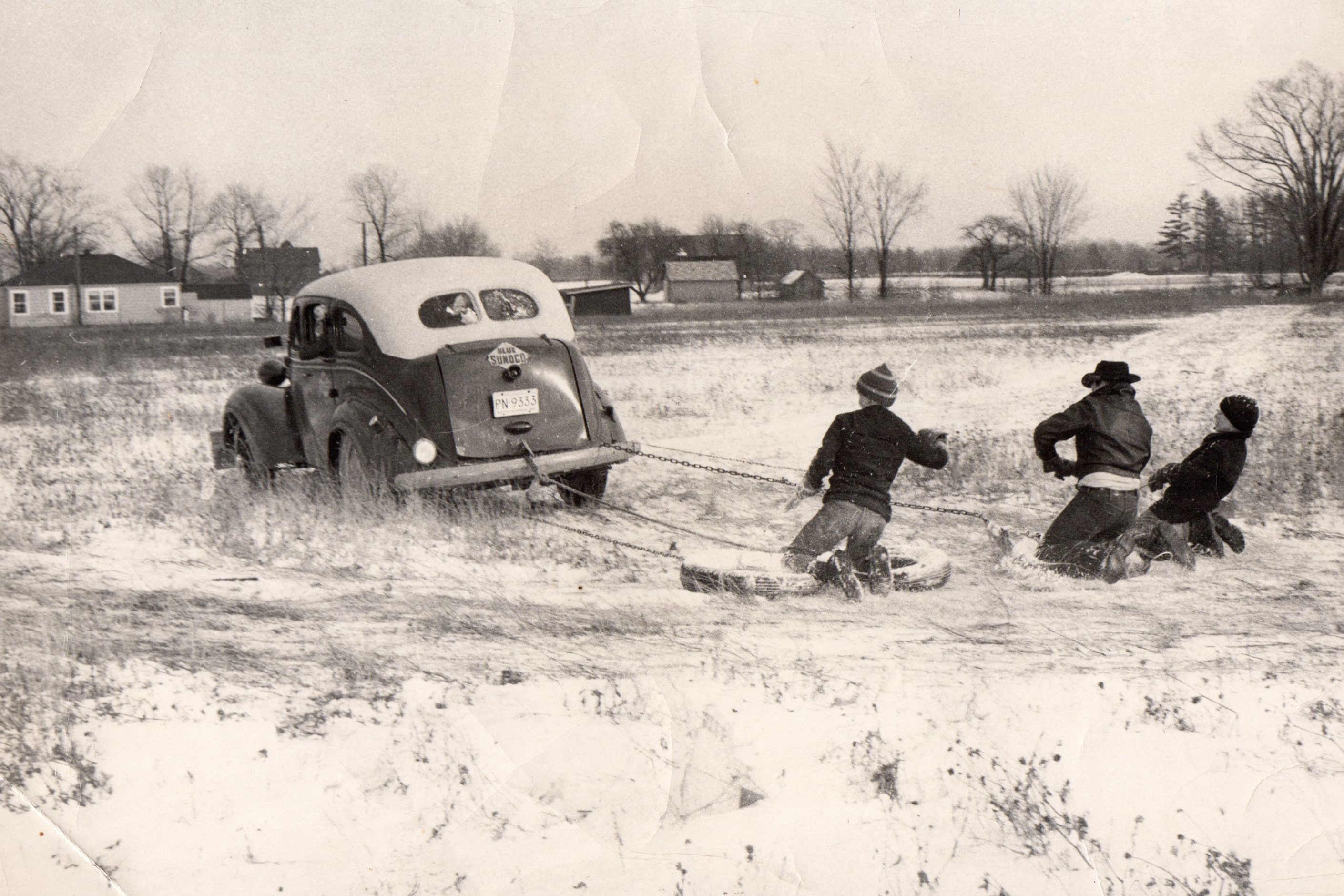
courtesy Jim Sanderson/Reminisce
Hold on tight
“In 1958, my father Sandy Sanderson, used this 1937 Dodge as a service car for his gas station in Goodells, Mich., to push-start cars. He also let the neighbor kids learn to drive in the field. In winter, for fun, the driver would try to dump anyone riding behind. When we got cold, we switched places with someone inside the car,” says Jim Sanderson of Port Huron, Mich.
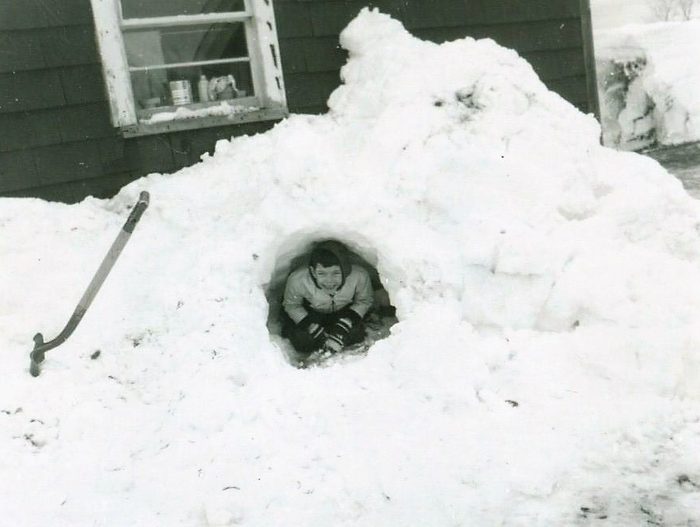
Courtesy John Clagg Jr./Reminisce
Snow tunnel
“In 1963 our family was stationed for three years at Dow Air Force Base in Bangor, Maine. This was probably my first time ever building a snow tunnel. You can see the excitement on my face!” says John Clagg Jr. now of Bossier City, La.
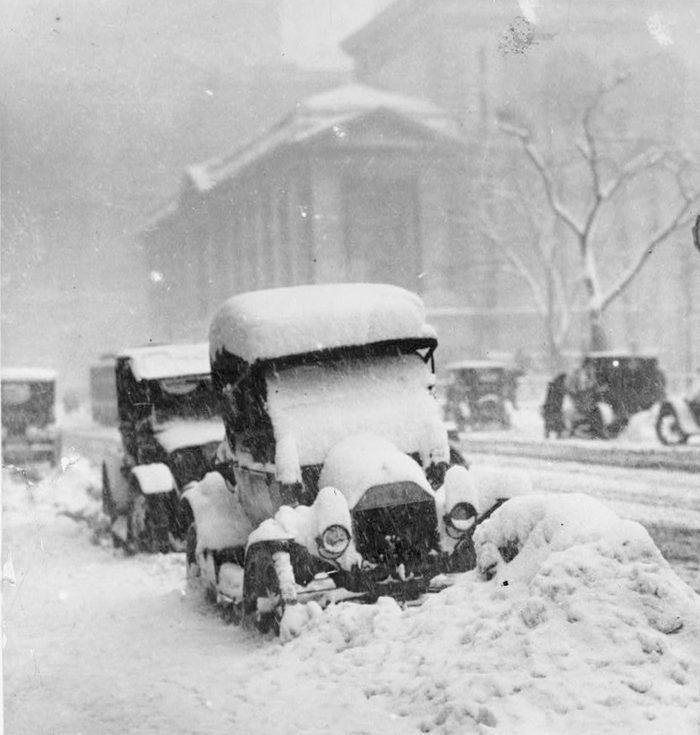
Library of Congress
Shoveling inside your car
In 1917, the year that this vintage winter photo was taken in New York City, automobiles were equipped with windshields, but they did not yet have windows—you know, those pieces of glass above the doors of the car that keep stuff out. So, during the Christmas season, snow removal was a back-breaking exterior and interior job.
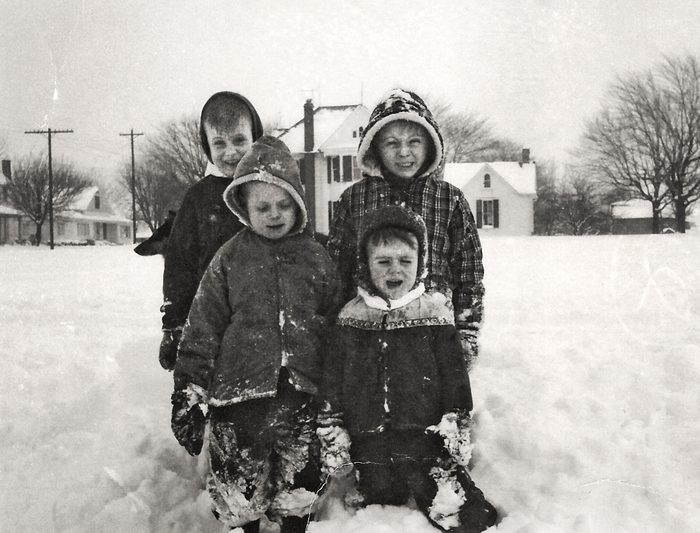
Courtesy John Scanlan/Reminisce
Layers on layers
“During the winter of 1966 in Stoutsville, Ohio, my three brothers, Jerry, Joe and Jeff, and I couldn’t wait to get outside to play. Getting dressed was a production. We didn’t have fancy down-filled snowsuits or ski pants. Instead, we started with white flannel long underwear and layered on hand-me-down jeans and shirts. We topped it all off with hooded winter jackets. After hours outside, we were hungry, tired wet and cold,” says John Scanlan, now of Hilton Head Island, S.C.
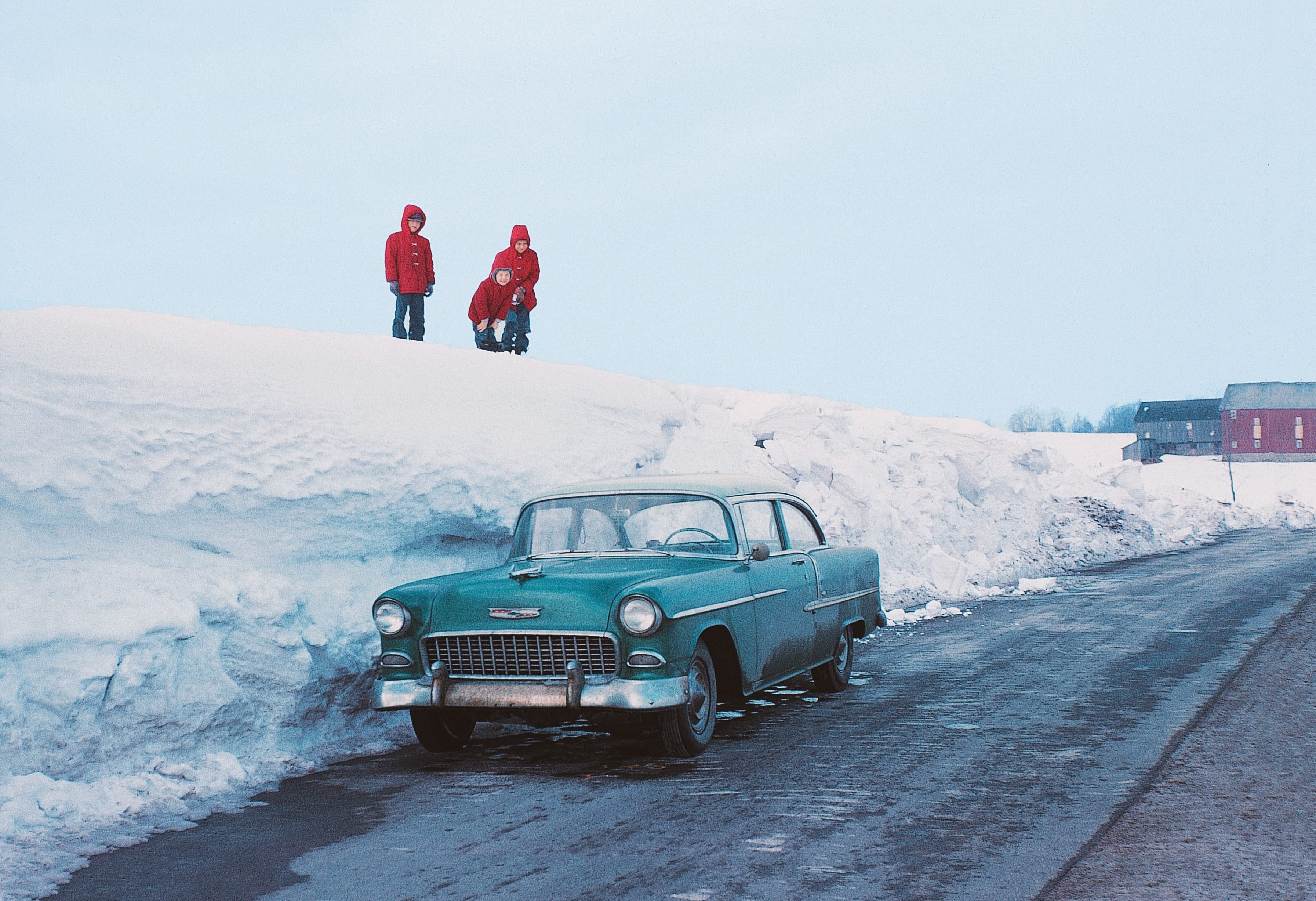
courtesy Louella Kightlinger/Reminisce
Thanksgiving snowstorm
“A Thanksgiving snowstorm—probably the big one in 1956—left snow piled so high it dwarfed our Chevrolet,” says Louella Kightlinger of Erie, Pa.
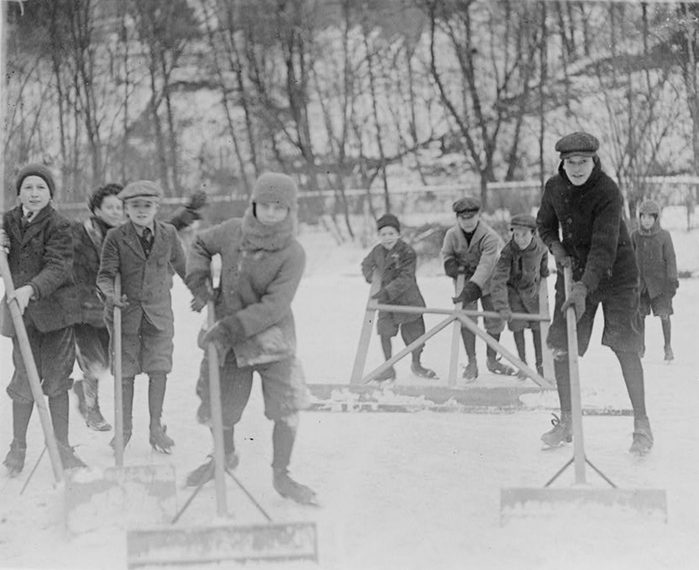
Library of Congress
No zamboni!
This vintage winter photo, snapped between 1909 and 1932, showcases how boys had to shovel the snow off the ice before skating on it, draining their energy and time. To sweep larger expanses, rink owners resorted to tractors dragging a scraper. After testing numerous prototypes, Frank J. Zamboni, a proprietor of Iceland Skating Rink in southern Calif. who dropped out of high school, received a patent for his eponymous ice-cleaning machine in 1953.
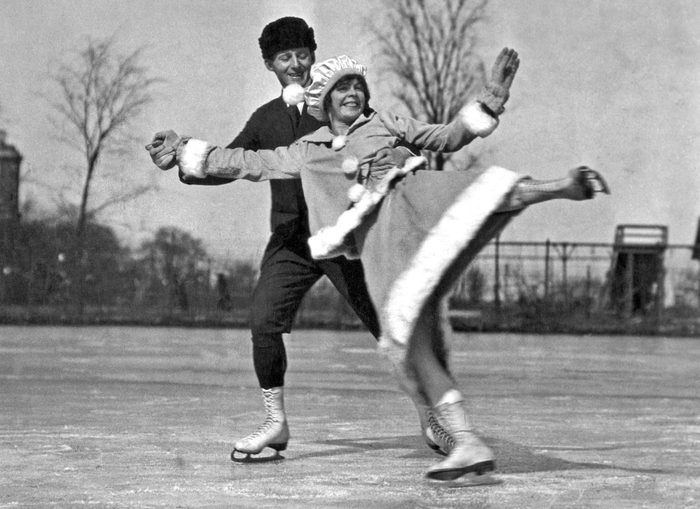
Underwood Archives/UIG/Shutterstock
Style on skates
The chilly weather can’t stop this happy couple from showing off their moves as they glide across the ice on this 1919 winter day in Chicago.
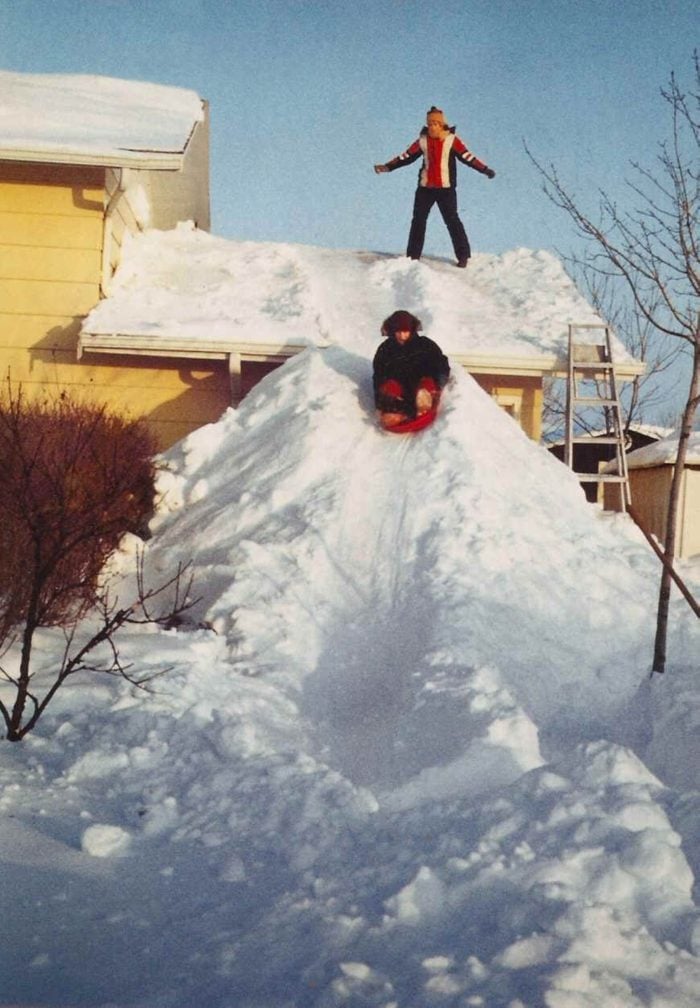
courtesy Greg Lopatka/Reminisce
Clear the roof
“I was afraid that my roof would collapse in the blizzard of 1979, so I shoveled the garage roof snow to the ground. The snow pile was as high as the gutter, so made a slide that took the kids down and all the way to the back of the lot,” says Greg Lopatka of Downers Grove, Ill.
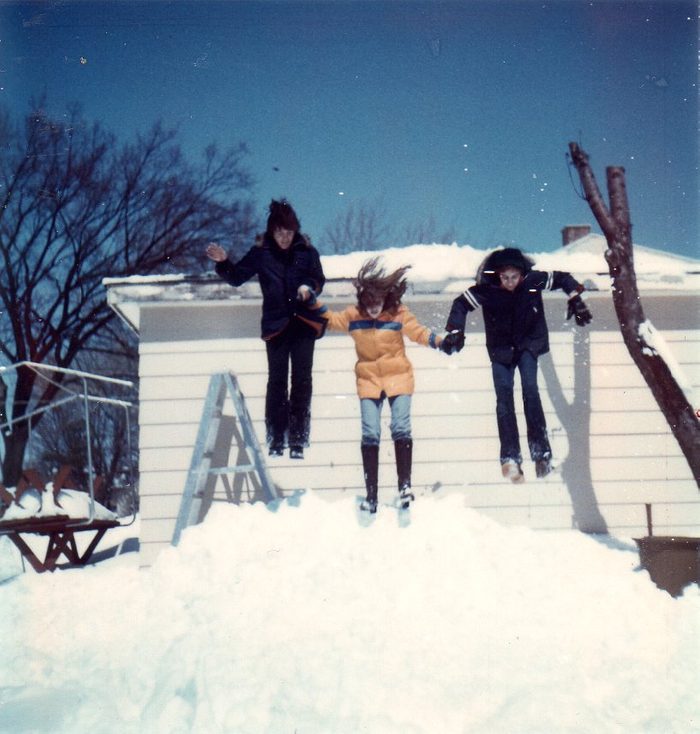
courtesy Craig Stroker/Reminisce
The snow will catch you
“This picture is from winter 1975. I thought it would be fun to jump off the roof,” says Craig Stroker, now of Palm Beach Gardens, Fla.
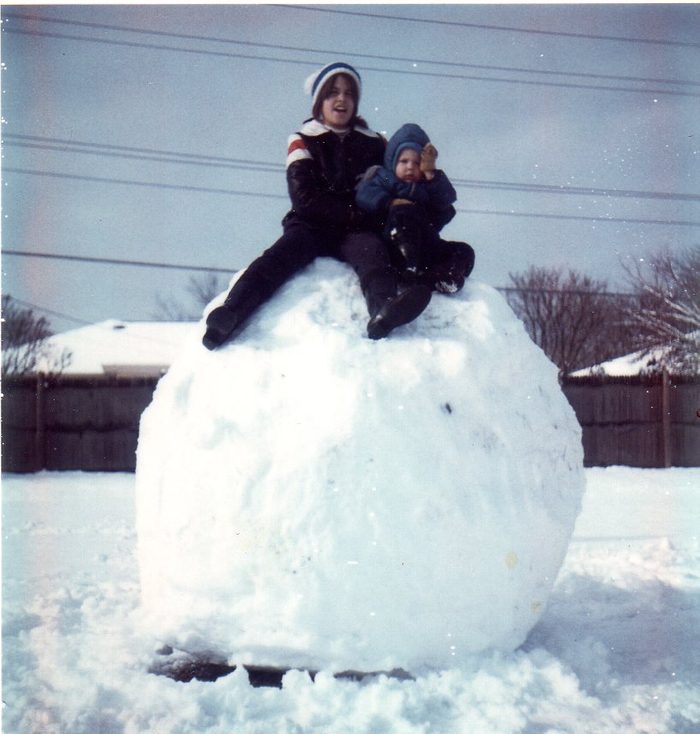
courtesy Craig Stroker/Reminisce
Giant snowball
“This is my sister Jill and my not-too-happy cousin Michael sitting on top of a giant snowball,” says Craig Stroker.
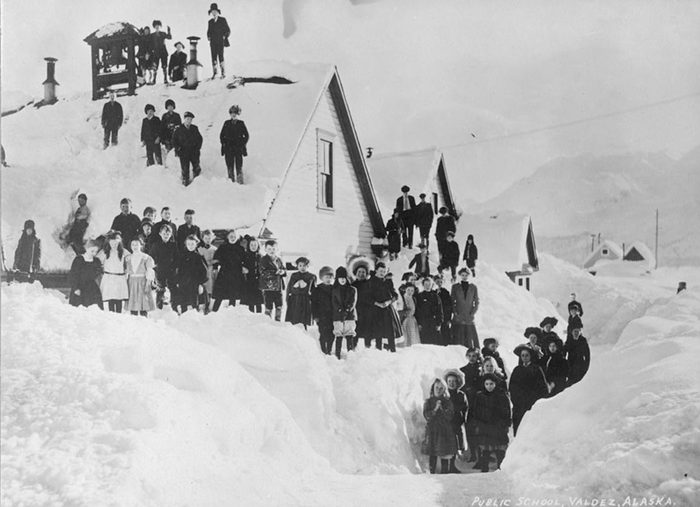
Library of Congress
No snow days
Two of the most beautiful words in the world: “snow day.” Most school districts in frosty climates have adapted through the years to have a certain number of snow days budgeted into their schedules so that learning stays on track. These Valdez, Alaska, students, shown here in 1910, did not have the luxury of staying home. But they did have the pretty cool perk of being able to stand on their schoolhouse roof.
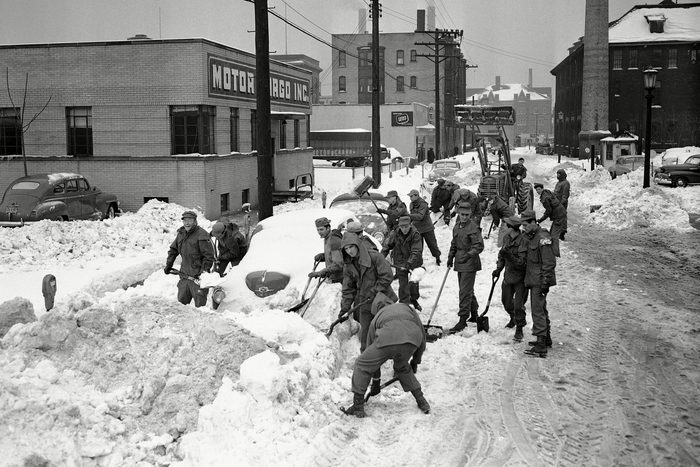
Anonymous/AP/Shutterstock
Winter traffic jam
Some things never change: Then and now, when it snows, you can count on your time on the road being far more time-consuming and onerous than any other time. In this 1950 vintage winter photo, members of the Ohio National Guard in Cleveland, Ohio (one of the best Christmas towns in the U.S.), help clear the streets, shoveling snow away from totally engulfed cars. This weekend snowfall caused one of the city’s worst-ever traffic jams.
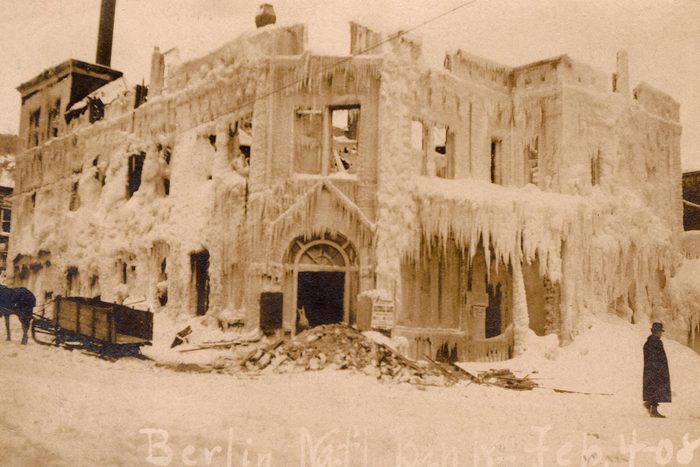
Historia/Shutterstock
Ice, ice baby
Hard to believe that, shortly before this photo was taken, this Berlin, N.H., building was on fire. But, on this 20-degrees-below day in 1908, it was. When firefighters doused it with water to put the fire out, this massive layer of icicles formed almost instantly. Brrrr!
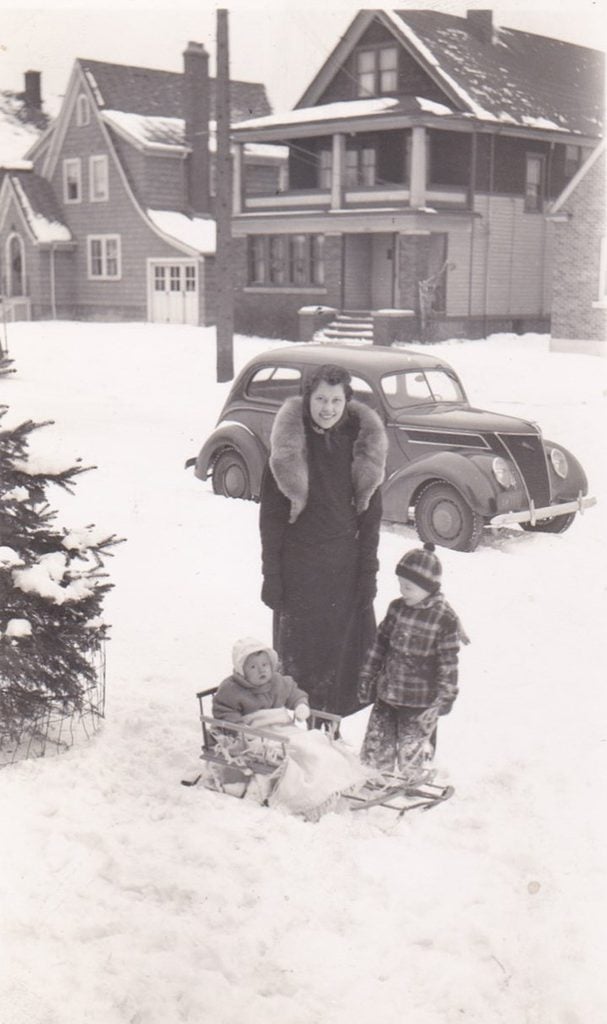
courtesy Pat Bridges/Reminisce
Winter of ’38
“This is my mom Wanda Wojcik, my brother Roger and my sister Audrey, in front of the family home in Niagara Falls, New York, during the winter of 1938-39,” says Pat Bridges now of Nashville, Tenn.
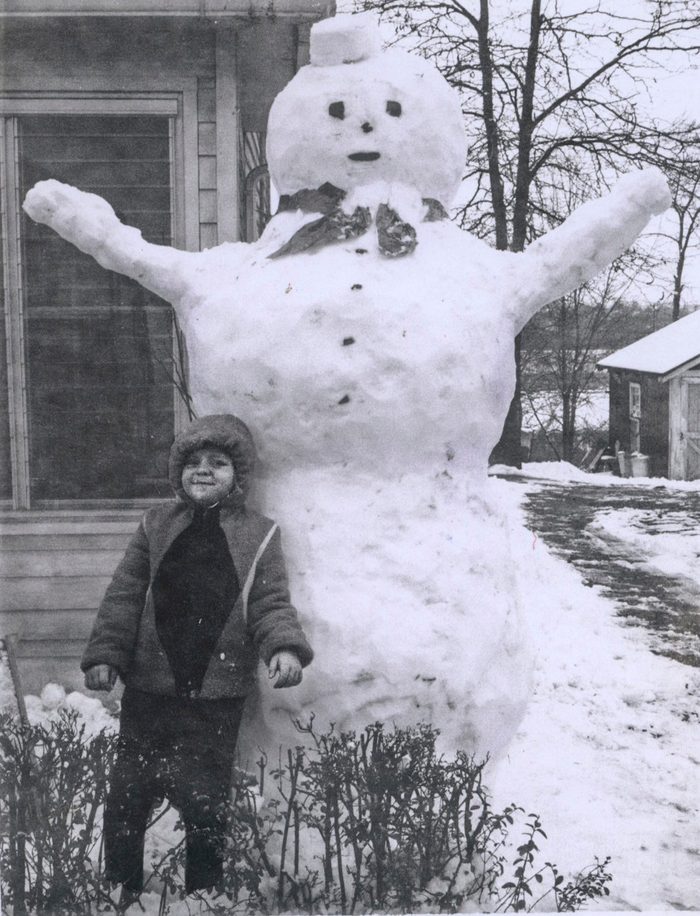
courtesy Cathy Chubrick/Reminisce
Giant snowman
We all know the beloved Christmas movie character Frosty the Snowman. Well, Cathy Chubrick, now of Largo, Fla, stands next to a 9-foot snowman in front of her Bound Brook, New Jersey, home. Her dad Steve, took the photo in December 1964 when she was 4 years old.
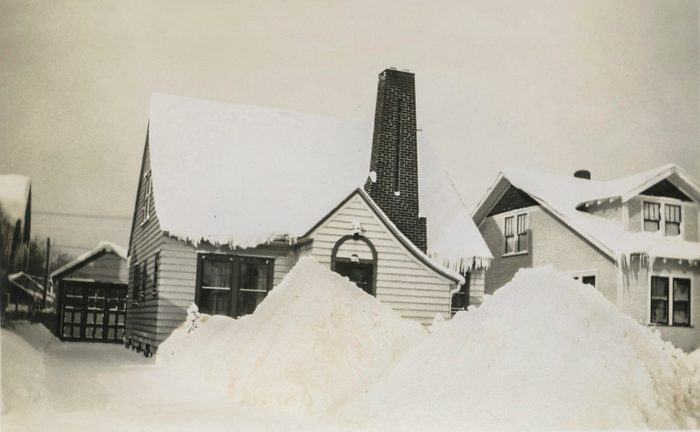
courtesy John Johnson/Reminisce
Piled high
The snow was piled high during the winter of 1939 in Muskegon Heights, Mich., when John Johnson, now of East Grand Rapids, was six years old.
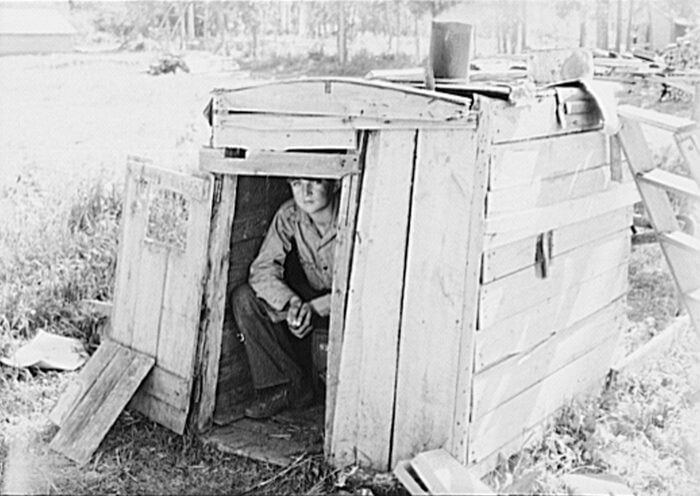
Library of Congress
Terrifying school transportation
Forget cars with seat warmers: Back in 1936, when this vintage winter photo was taken, Minnesota students traveled to school in a cabin mounted on a sleigh. The trip took a bumpy two hours (one way) and that’s if their ride didn’t burst into flames first—the wooden compartment was heated by a stove.
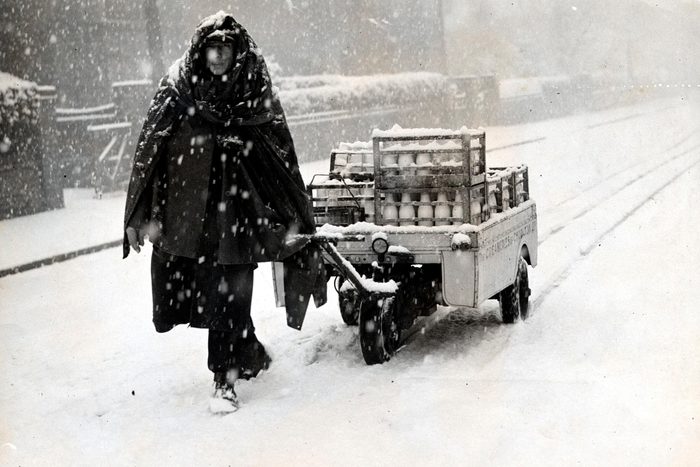
Associated Newspapers/Daily Mail/Shutterstock
The milkman cometh
It was a rough day on the job for this milkman in Manchester, England, seen here slogging through heavy snowfall in 1946. In the 1940s, milkmen were beginning to lose popularity in the United Kingdom in favor of refrigeration and widespread supermarkets.
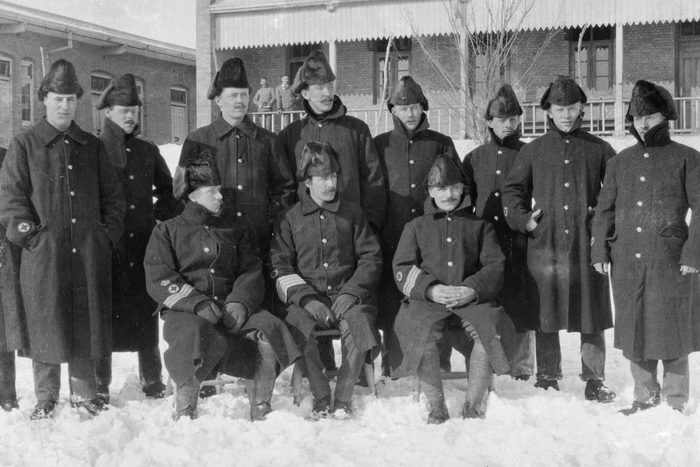
Historia/Shutterstock
Royal guard
Soldiers of the Royal Inniskilling Fusiliers, an Irish regiment of the British army that existed from 1881 until 1968, brave the cold, decked in hats slightly less extravagant than those worn by the Queen’s guard. The soldiers in this photo, which dates back to around 1911, are stationed in the British concession in the Chinese city of Tientsin (modern-day Tianjin).
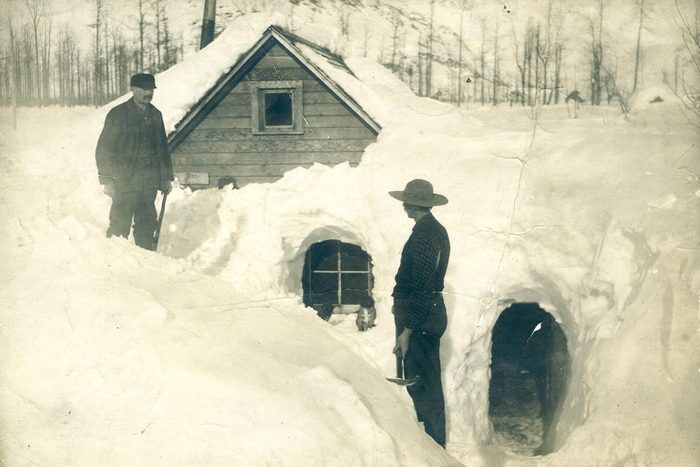
Nara Archives/Shutterstock
Snowed in
It’s hard to tell where the snow ends and this humble house begins in this photo from 1903. These Valdez, Alaska residents had to dig out a door-shaped hole so that they could enter their home. Things aren’t so different in that neck of the woods today, though; in 2012, Valdez experienced a record-breaking snowfall over more than 20 feet!
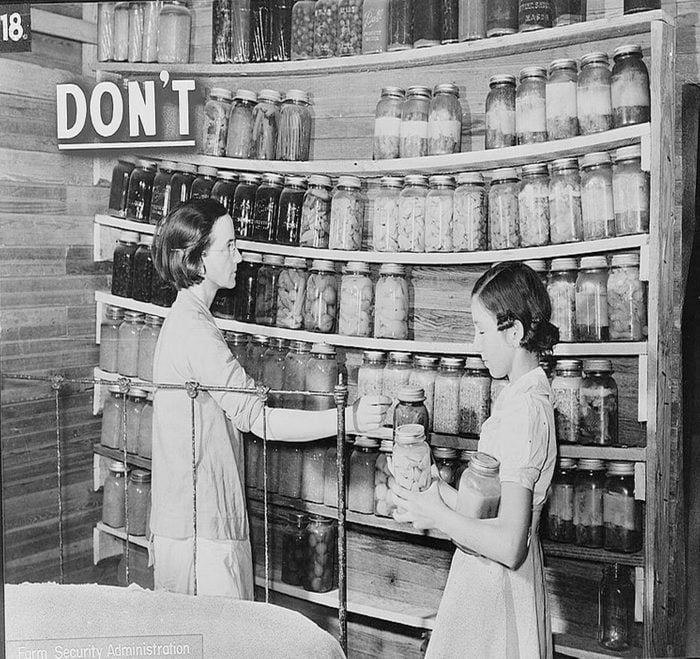
Library of Congress
No fridges or freezers
Back in the day, if you wanted to eat different kinds of produce in the winter, it often came from a jar. Canning fruits and vegetables in glass jars—why wasn’t it called “jarring”?—was the cheapest, most reliable way to preserve them, but households ran the risk of their shelves collapsing from the heavy, breakable containers. Refrigerators and freezers were not common until after World War II, because the technology was faulty and prices were prohibitive. In 1939, when this vintage winter photo was taken, a typical fridge cost around 240,ornearly240, or nearly 240,ornearly4,000 in today’s dollars.
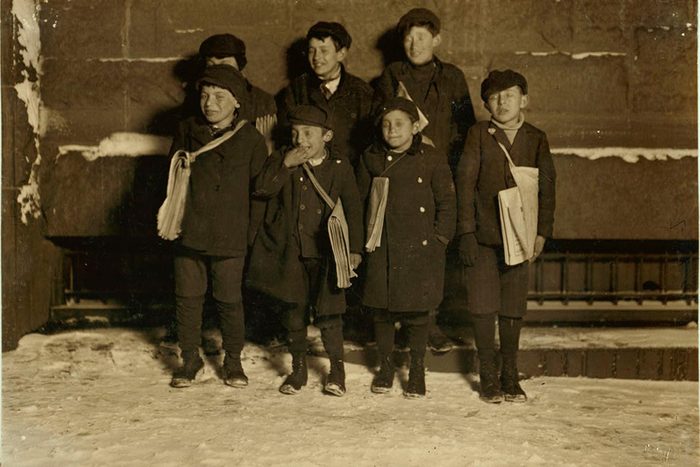
Library of Congress
Toiling in the brutal cold
These days, we can get the latest headlines just by scrolling through our phones—we don’t even need to leave our beds. And for those of us who prefer to read actual newspapers, we can pay someone to deliver it to our doorsteps. But until the Great Depression, newsies—boys who hawked newspapers on the streets for pennies a day—were the main way that the news was disseminated. In this 1909 vintage winter photo taken in Hartford, Conn., the youngest newsie was 8 years-old, and he’d already been on the job for three years.
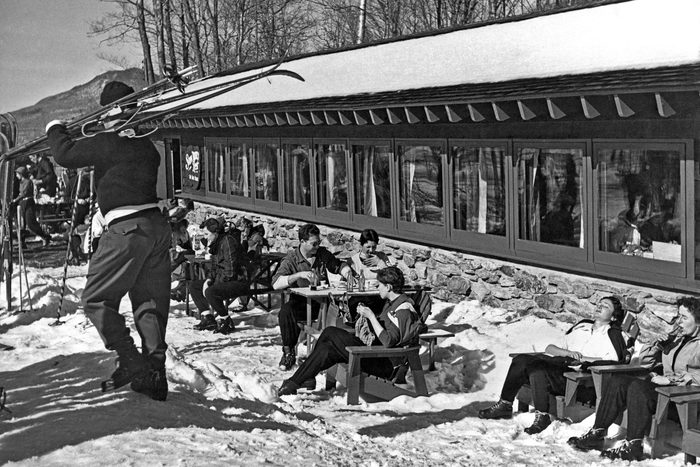
Underwood Archives/UIG/Shutterstock
Après-ski
Both then and now, winter isn’t all bad. This picture taken in 1958 captures a group of skiers taking a load off after a day of hitting the Vermont slopes. Judging by their wardrobes and contented expressions, it looks like this was a mild, sunny winter day, perfect for outdoor merriment.
Why trust us
At Reader’s Digest, we’re committed to producing high-quality content by writers with expertise and experience in their field in consultation with relevant, qualified experts. We rely on reputable primary sources, including government and professional organizations and academic institutions as well as our writers’ personal experience where appropriate. We verify all facts and data, back them with credible sourcing and revisit them over time to ensure they remain accurate and up to date. Read more about our team, our contributors and our editorial policies.
